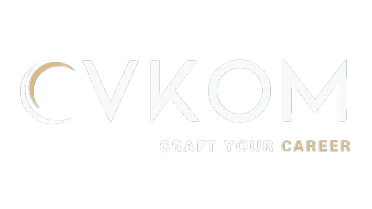Land Your Next Job: Showcase Your Success Stories
- Use the STAR Method: Situation, Task, Action, Result.
- Quantify Your Achievements: Use numbers to prove your impact.
- Tailor to the Job: Highlight relevant stories that impress hiring managers.
How to
Highlight Your Success Stories in a Cover Letter
A cover letter is more than a formal
introduction to your resume—it's your opportunity to share your story and show
potential employers how you’ve made a tangible impact in your previous roles.
Success stories provide evidence of your skills, accomplishments, and ability
to deliver results, making your application stand out. At CVKOM, we
emphasize the importance of showcasing achievements in your cover letter to
leave a strong impression on hiring managers. Here's how to highlight your
success stories effectively.
Why
Success Stories Matter
Success stories in a cover letter
serve several purposes:
- Demonstrate Impact:
They provide concrete examples of your value to previous employers.
- Showcase Relevant Skills: They highlight skills that are transferable to the role you’re applying for.
- Make You Memorable:
Stories make your application stand out by creating a personal and
relatable connection with the hiring manager.
- Build Credibility:
Quantifiable achievements and real examples build trust and credibility.
Steps
to Effectively Highlight Your Success Stories
1.
Choose the Right Stories
Select success stories that are relevant to the job description and showcase your most valuable skills. Focus on achievements that align with the company’s goals or the specific requirements of the role. Tips:
- Review the job posting to identify key responsibilities
and desired qualifications.
- Choose stories that demonstrate how you’ve excelled in
similar roles or industries.
Example:
"Your posting emphasizes the need for a results-driven sales manager.
In my previous role, I increased regional sales by 35% within six months
through strategic targeting and customer engagement initiatives."
2.
Use the STAR Method
The STAR method (Situation,
Task, Action, Result) provides a structured way to present your success
stories.
- Situation:
Set the context by describing the challenge or opportunity.
- Task:
Explain your role in addressing the situation.
- Action:
Detail the specific steps you took to solve the problem or achieve the
goal.
- Result:
Highlight the outcome, using metrics when possible.
Example:
"In my previous role as a Marketing Specialist, the company faced
declining customer retention rates (Situation). I was tasked with revamping our
email marketing strategy (Task). I implemented targeted campaigns based on
customer behavior and preferences (Action), resulting in a 20% increase in
retention within three months (Result)."
3.
Quantify Your Achievements
Numbers and metrics make your
success stories more compelling and credible. They provide clear evidence of
your impact and help hiring managers visualize your contributions.
Tips:
- Use percentages, dollar amounts, or timeframes to
quantify results.
- Highlight efficiency improvements, revenue growth, or
project successes.
Example:
"By introducing an automated inventory management system, I reduced
operational costs by 15% and improved order accuracy by 30%."
4.
Focus on the Employer’s Needs
Frame your success stories in a way
that demonstrates how your achievements can benefit the prospective employer.
Connect your past accomplishments to their goals or challenges.
Tips:
- Research the company’s priorities or pain points.
- Show how your experiences can address their specific
needs.
Example:
"I understand [Company Name] is looking to enhance its customer
onboarding process. In my previous role, I redesigned the onboarding
experience, reducing churn by 25% and increasing customer satisfaction scores
by 40%."
5.
Use Action-Oriented Language
Action verbs create a sense of initiative and accomplishment. Use dynamic language to describe your
contributions and results.
Examples of Action Verbs:
- Led, Initiated, Implemented, Optimized, Streamlined,
Improved, Increased, Achieved.
Example:
"I spearheaded a cross-departmental initiative that streamlined
workflows, cutting project completion time by 20%."
6.
Make Your Stories Concise
While success stories are important,
keep them brief and to the point. Use concise sentences to maintain the
reader’s attention and focus on the most impactful details.
Example:
"Increased website traffic by 50% through a targeted SEO strategy,
resulting in a 25% boost in online sales within six months."
7.
Balance Technical and Soft Skills
Example:
"As a project manager, I not only delivered a $1M IT project ahead of
schedule but also mentored a team of five junior developers, fostering their
professional growth."
8.
Tailor Stories for Each Job
Customize your success stories for
each application to ensure relevance. Use the job description as a guide to
select the most appropriate examples.
Example:
"Your posting mentions the importance of innovative thinking. In my
previous role, I developed a new product line that generated $500,000 in
additional revenue within the first year."
Examples
of Success Stories in Cover Letters
Example
1: Leadership Success
"In my role as Team Lead, I
motivated a group of ten sales representatives to exceed their quarterly
targets, resulting in a 20% increase in overall revenue. My ability to foster
collaboration and drive performance would make me an asset to your team."
Example
2: Problem-Solving Success
"When faced with a 30% decrease
in customer retention, I analyzed data trends and implemented a loyalty
program. This initiative increased retention by 25% within three months,
demonstrating my ability to turn challenges into opportunities."
Example
3: Technical Success
"As a Data Analyst, I developed
a predictive model using Python that reduced inventory waste by 18%, saving the
company $50,000 annually. I am eager to bring this analytical expertise to your
organization."
How
CVKOM Helps You Showcase Success Stories
At CVKOM, we offer the tools
and resources to help you effectively highlight your achievements in your cover
letter:
- AI-Powered Content Suggestions: Tailored recommendations to emphasize your most
relevant success stories.
- Professional Templates: Clean, customizable designs to showcase your
accomplishments.
- Personalization Tools: Adapt your cover letter for each job application
seamlessly.
Conclusion
Success stories are the backbone of
an impactful cover letter. By selecting relevant examples, quantifying
achievements, and aligning your stories with the employer’s needs, you can
craft a cover letter that captures attention and sets you apart from the
competition. At CVKOM, we are dedicated to helping you highlight your
unique successes to make a lasting impression. Start creating your standout
cover letter today!






